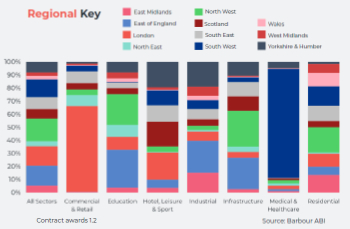Pandemic migration
Pandemics such as COVID-19 can be more contagious in large cities for several reasons. As well as socioeconomic factors associated with quality of life, basic proximity factors can play a role in the spread of transmissible illnesses.
In urban settings, networks of buildings, crowded pavements and public transportation create conditions in which people often move in closer proximity to each other. During the COVID-19 pandemic of 2020, many people were encouraged to work from home. The temporary shift to technology-based remote working opened up the possibility of a portion of the workforce permanently relocating away from urban settings.
This form of pandemic migration is being explored as a beneficial approach to dealing with the spread of highly-infectious illnesses.
The results of an October 2020 study conducted by Massimiliano Zanin and David Papo indicate that pandemic migration away from cities to less densely populated areas may help to reduce the spread of illnesses like COVID-19. In the study, Zanin and Papo simulated a forced migration that moved healthy people out of dense cities at the onset of a pandemic. The results showed that while movement from big cities to small towns might be slightly less safe for the people in small towns, overall, for a global pandemic situation, this reduction in the density of highly populated areas is better for the majority of people.
FInd out more at: https://aip.scitation.org/doi/10.1063/5.0028091
[edit] Related articles on Designing Buildings Wiki
- Adapting your technology to the new working normal.
- Beyond the pandemic.
- Coronavirus and the construction industry.
- Defining the office.
- Hub and spoke model.
- Post pandemic places report.
- PwC CEO Panel survey.
- Wood and healthy office spaces.
[edit] External resources
- Massimiliano Zanin and David Papo, Travel restrictions during pandemics: A useful strategy?
Featured articles and news
Unlocking surplus public defence land and more to speed up the delivery of housing.
The Planning and Infrastructure bill oulined
With reactions from IHBC and others on its potential impacts.
Farnborough College Unveils its Half-house for Sustainable Construction Training.
Spring Statement 2025 with reactions from industry
Confirming previously announced funding, and welfare changes amid adjusted growth forecast.
Scottish Government responds to Grenfell report
As fund for unsafe cladding assessments is launched.
CLC and BSR process map for HRB approvals
One of the initial outputs of their weekly BSR meetings.
Architects Academy at an insulation manufacturing facility
Programme of technical engagement for aspiring designers.
Building Safety Levy technical consultation response
Details of the planned levy now due in 2026.
Great British Energy install solar on school and NHS sites
200 schools and 200 NHS sites to get solar systems, as first project of the newly formed government initiative.
600 million for 60,000 more skilled construction workers
Announced by Treasury ahead of the Spring Statement.
The restoration of the novelist’s birthplace in Eastwood.
Life Critical Fire Safety External Wall System LCFS EWS
Breaking down what is meant by this now often used term.
PAC report on the Remediation of Dangerous Cladding
Recommendations on workforce, transparency, support, insurance, funding, fraud and mismanagement.
New towns, expanded settlements and housing delivery
Modular inquiry asks if new towns and expanded settlements are an effective means of delivering housing.
Building Engineering Business Survey Q1 2025
Survey shows growth remains flat as skill shortages and volatile pricing persist.
Construction contract awards remain buoyant
Infrastructure up but residential struggles.
Warm Homes Plan and existing energy bill support policies
Breaking down what existing policies are and what they do.
A dynamic brand built for impact stitched into BSRIA’s building fabric.

























